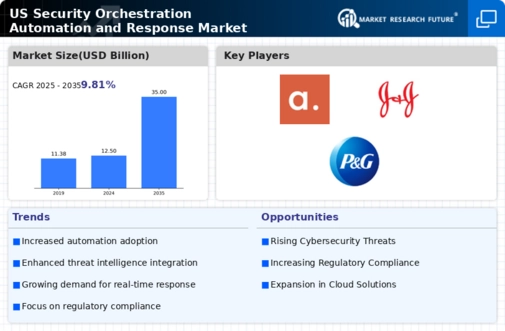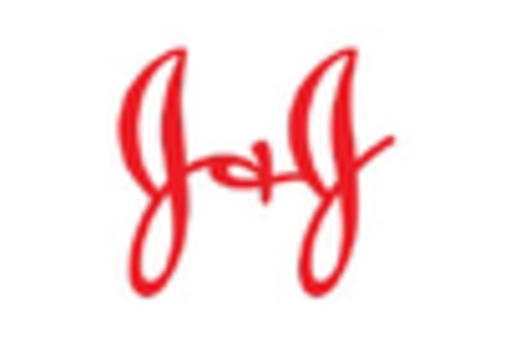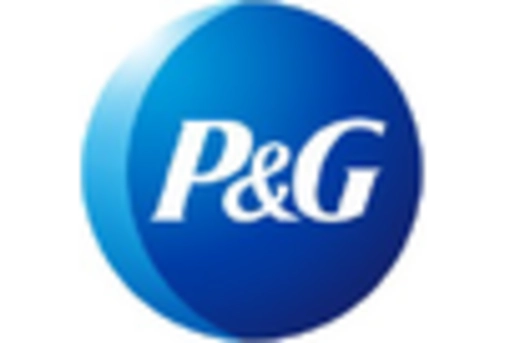Market Growth Projections
The Global US Security Orchestration Automation and Response Market Industry is poised for substantial growth in the coming years. Projections indicate that the market will reach 12.5 USD Billion in 2024 and expand to 35 USD Billion by 2035. This growth trajectory suggests a compound annual growth rate of 9.81% from 2025 to 2035, reflecting the increasing recognition of the importance of security orchestration and automation in safeguarding organizational assets. As cyber threats become more prevalent and complex, the demand for innovative solutions in this market is likely to intensify, driving further investment and development.
Growth of Cloud-Based Solutions
The Global US Security Orchestration Automation and Response Market Industry is experiencing a notable shift towards cloud-based security solutions. Organizations are increasingly adopting cloud technologies for their flexibility, scalability, and cost-effectiveness. Cloud-based orchestration and automation tools enable organizations to manage security operations more efficiently, regardless of their geographical location. This trend is likely to accelerate market growth, with projections indicating a rise to 35 USD Billion by 2035. The ability to leverage cloud resources for security operations aligns with the broader digital transformation initiatives undertaken by organizations, further driving the adoption of automated security solutions.
Increasing Cybersecurity Threats
The Global US Security Orchestration Automation and Response Market Industry is experiencing heightened demand due to the escalating frequency and sophistication of cyber threats. Organizations are increasingly targeted by ransomware, phishing attacks, and data breaches, necessitating robust security measures. In 2024, the market is projected to reach 12.5 USD Billion, reflecting a growing recognition of the need for automated response systems to mitigate risks. As cyber threats evolve, the integration of orchestration and automation tools becomes essential for organizations aiming to enhance their security posture and respond effectively to incidents.
Demand for Operational Efficiency
The Global US Security Orchestration Automation and Response Market Industry is witnessing a surge in demand for operational efficiency among organizations. Automation of security processes allows for faster detection and response to incidents, reducing the burden on security teams. By integrating orchestration tools, organizations can streamline workflows, minimize human error, and enhance overall productivity. This trend is likely to contribute to a compound annual growth rate of 9.81% from 2025 to 2035, as businesses recognize the value of investing in automated solutions to optimize their security operations and allocate resources more effectively.
Regulatory Compliance Requirements
The Global US Security Orchestration Automation and Response Market Industry is significantly influenced by stringent regulatory compliance requirements. Organizations are compelled to adhere to various regulations, such as GDPR and HIPAA, which mandate the implementation of effective security measures. This regulatory landscape drives the adoption of security orchestration and automation solutions, as they facilitate compliance through streamlined reporting and incident response processes. As organizations strive to avoid hefty fines and reputational damage, the market is expected to grow, with projections indicating a rise to 35 USD Billion by 2035, highlighting the critical role of automation in compliance.
Integration of Artificial Intelligence
The Global US Security Orchestration Automation and Response Market Industry is increasingly shaped by the integration of artificial intelligence technologies. AI-driven solutions enhance the capabilities of security orchestration and automation tools by providing advanced threat detection, predictive analytics, and automated decision-making. This integration allows organizations to respond to threats more swiftly and accurately, thereby reducing the impact of security incidents. As AI continues to evolve, its adoption within the market is expected to drive growth, with the market projected to reach 12.5 USD Billion in 2024, underscoring the transformative potential of AI in security operations.














Leave a Comment